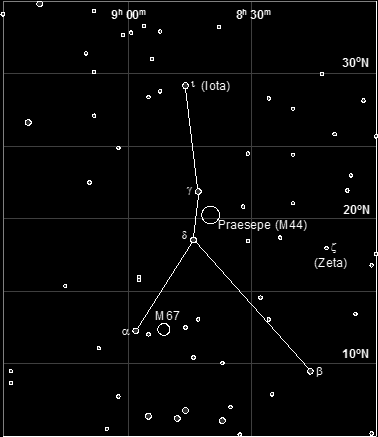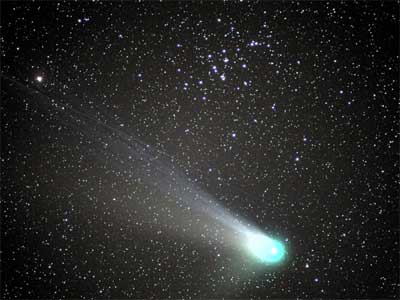Cancer
Possessing no star brighter than the third magnitude, Cancer owes its relative prominence as a constellation to its location on the ecliptic and the presence of Praesepe, the 44th object in Charles Messier’s famous catalogue and one of the finest open star clusters in the heavens.
Cancer has another excellent star cluster the somewhat more distant Messier 67, lying 2,500 light years away. M67 is readily observable with binoculars, but requires a telescope to resolve it into stars. There are thought to be around 500 members of M67 and it is remarkable for being one of the oldest galactic clusters known. Even “G” type stars similar to our own Sun in M67 have moved off the main sequence, indicating an age of at least 10 billion years.
Cancer possesses a number of interesting double and multiple stars, not least Zeta Cancri (also known as Tegmeni). A small telescope will show 5th and 6th magnitude stars with an easy separation of 6 arcseconds.

Comet Neat and M44 (Beehive Cluster)
Iota Cancri consists of a 4.5 magnitude yellow primary and a 6.5 magnitude blue secondary. The separation is 30 arcseconds – well within the range of good binoculars, although the colours will be better brought out by a telescope.